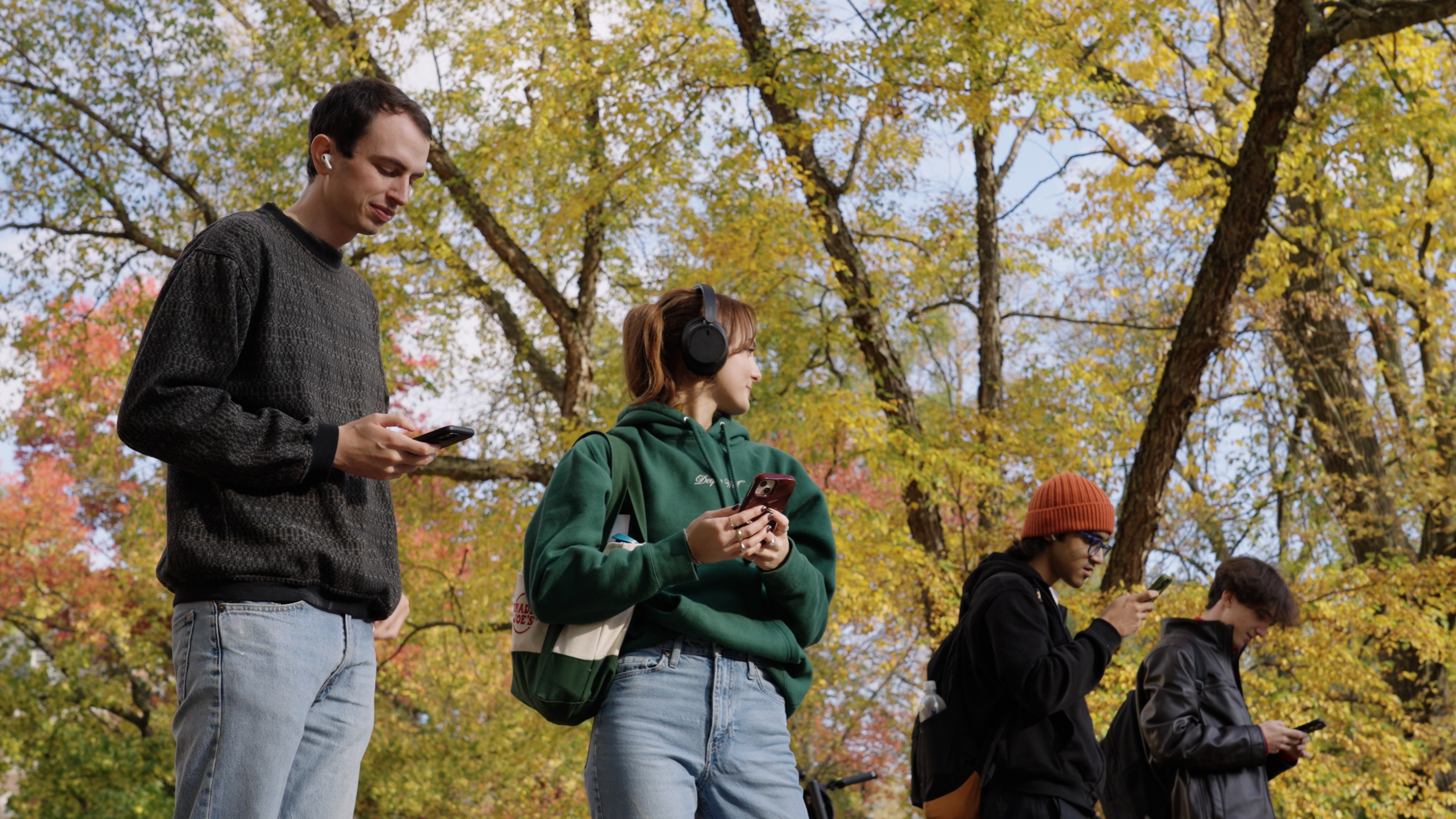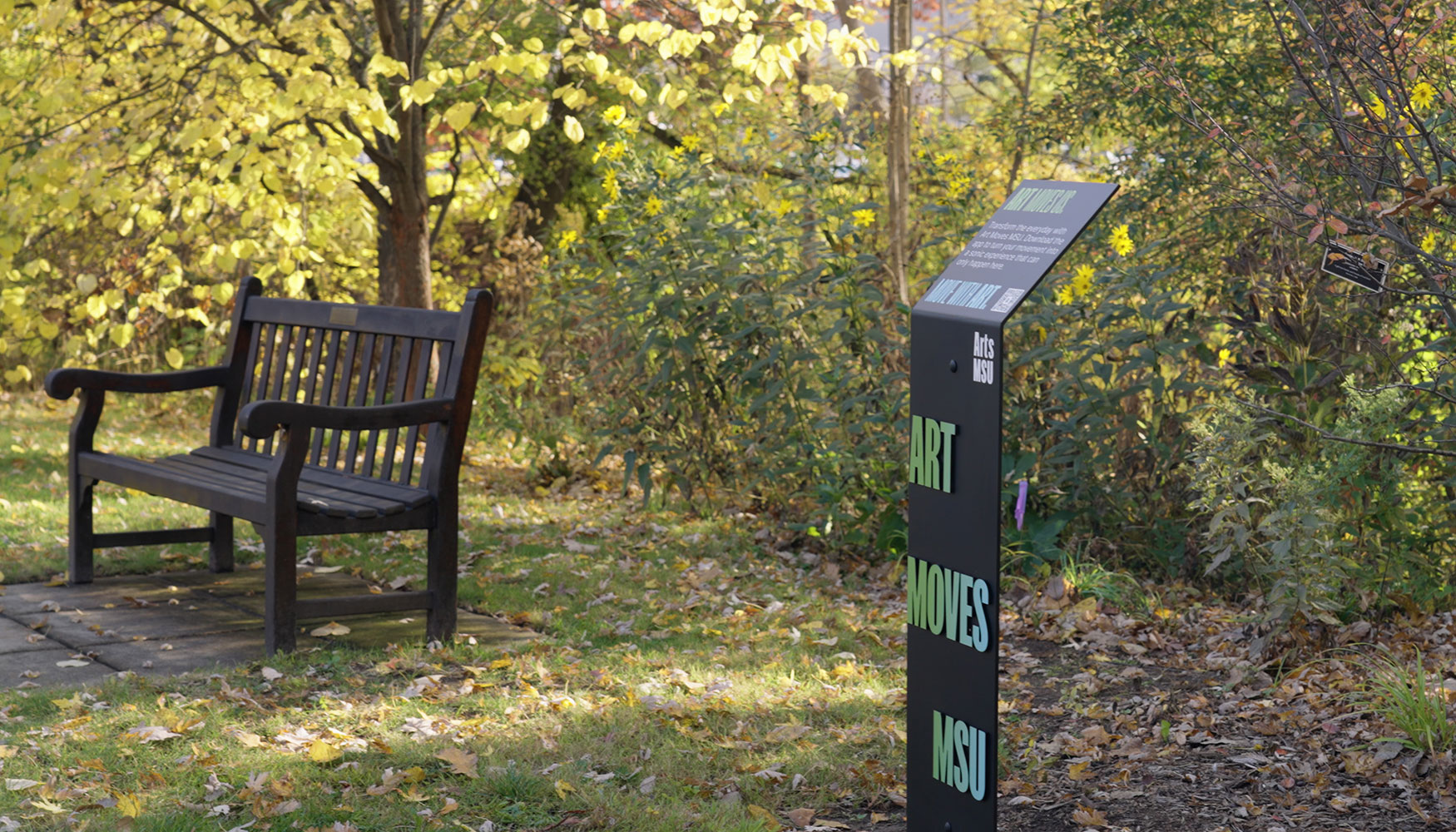“On the banks of the Red Cedar” is the opening to Michigan State University’s school song and a phrase known well by everyone on its picturesque campus that’s situated along either side of that river. A walking trail runs along the winding Red Cedar River and intersects with various bridges to connect the two sides of campus. For many, it’s just a way to take a daily walk to this class or that meeting . . . but what happens when you take that everyday walk and turn it into an arts engagement?

“Art Moves MSU” lets you transform this ordinary movement across campus into something new. The app-based installation is visioned as a generative sonic experience to encourage users to cultivate a sense of everyday wonder in their daily lives. Made possible by a series of beacons that run along the Red Cedar River trail, as well as a number of scattered locations around campus, the app is activated when you pass by, turning a walk across campus into a unique, immersive “choose your own adventure” of sound.
The installation was brought to campus in collaboration with SOZO, an international contemporary arts agency and incubator at the intersection of social impact, innovation and culture.

“It’s been such a gift to be on this particular campus and universities in general,” said Chisa Yamaguchi, senior manager and producer with SOZO. “There’s such a drive for innovation and a culture of belonging that really holds hands with an experience like this, that is about highlighting the unique personality of places. And to be in an institution with so many other thought partners and knowing that the experience of students and faculty and the community are all being held simultaneously, is what’s so unique about the convergence.”
“Art Moves MSU” is designed to be flexible, with the capacity to feature a rotation of commissioned work from a diverse lineup of artists, musicians and aural storytellers. The inaugural compositions will include a piece by composer and one of the producers of the “Art Moves MSU” app, Hays Holladay, in response to a specific stretch of the Red Cedar River that runs from Farm Lane to the Library Pedestrian Bridge. The composition is designed to be responsive to the ways in which an individual moves through space and provides two distinct listening experiences on either side of the river. For those daring enough to kayak down this stretch of the river, which includes the need to portage at one point, an experience that merges compositions from both sides awaits.

“Every time somebody experiences this piece, it will be slightly different,” said Holladay. “I am composing for people to move, which leaves the end composition up to how you choose to move through it. You’re the conductor. The orchestra lives in fixed space, but the pace at which it all unfolds up to you.”
Emphasizing the university’s deep commitment to its environment, the other is a piece composed by former MSU doctor of musical arts student Kakia Gkoudina, about the Beal Botanical Garden’s work to remove invasive species from along the riverbank and restore it to its natural, rewilded state. Gkoudina’s work is performed by student musicians from MSU’s College of Music.
“It is a different thing to experience this piece next to a river as opposed to a concert hall,” said Gkoudina. “For this piece, it was integral it gets performed near the river, in the outdoors. Don’t get me wrong, an outdoor performance poses difficulties in terms of sound detail getting lost. Nature makes herself heard and that is precisely what can make the entire experience unrivaled. When the performance setting changes so radically, new aspects of the composition are revealed.”
Most importantly, “Art Moves MSU” demonstrates what a campus can look like if a university embeds the arts into its infrastructure. How can we take an everyday experience and make it unexpected, surprising and magical? As the first university to employ this app across its campus — which has also been used by Central Park, SXSW and the U.S. Department of State — MSU is about to find out.